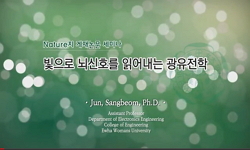인류기후대적응론과 李滉理發氣隨氣發理乘학설의 관점에서 유교철학사상이 결 합된 황제내경의 오태인 중 음양화평지인의 의미를 살펴보기 위하여, 영추 통천편 에서 소사가 설명한 오태...
http://chineseinput.net/에서 pinyin(병음)방식으로 중국어를 변환할 수 있습니다.
변환된 중국어를 복사하여 사용하시면 됩니다.
- 中文 을 입력하시려면 zhongwen을 입력하시고 space를누르시면됩니다.
- 北京 을 입력하시려면 beijing을 입력하시고 space를 누르시면 됩니다.
기획논문 : 한(韓) 중(中) 유학(儒學)의 전통(傳統)과 변화(變化) ; 인류기후대적응론(人類氣候帶適應論)과 이황(李滉) 이발기수기발이승(理發氣隨氣發理乘) 학설(學說)의 관점(觀點)에서 본 황제내경(黃帝內經) 오태인(五態人)의 음양화평지인(陰陽和平之人) = The Meaning of Yin Yang(陰陽) Balanced Type in Huang Di Nei Jing(黃帝內經)
한글로보기https://www.riss.kr/link?id=A60227371
- 저자
- 발행기관
- 학술지명
- 권호사항
-
발행연도
2012
-
작성언어
Korean
-
주제어
이황 ; 성리학 ; 이기론 ; 이발기수 기발이승 ; 본성 ; 음양화평지인 ; 황제내경 ; 맞 춤예방의학 ; 건강관리 ; 사회관리 ; 심리진화 ; 기후대 적응형질 표현형 ; Huang Di Nei Jing ; yin yang balanced type ; trait ; character ; phenotype ; human behavior ; Yi Hwang ; nature ; principle ; material ; character ; climate ; personalized preventive
-
KDC
151.05
-
등재정보
구)KCI등재(통합)
-
자료형태
학술저널
-
수록면
75-116(42쪽)
- 제공처
- 소장기관
-
0
상세조회 -
0
다운로드
부가정보
인류기후대적응론과 李滉理發氣隨氣發理乘학설의 관점에서 유교철학사상이 결 합된 황제내경의 오태인 중 음양화평지인의 의미를 살펴보기 위하여, 영추 통천편 에서 소사가 설명한 오태인에 대한 서로 다른 점과 구별하는 방법 및 치유법을 관 련 기후대적응형질 표현형들의 사회적, 정신적, 신체적 특성과 비교 분석한 결과 는 다음과 같다. 통천편에서 소사가 설명한 소음지인은 기후대적응형질 기본 표현 형 AwΘ형에 상응하는 특성을, 태음지인은 기본 표현형 AfΘ형에 상응하는 특성을, 소양지인은 기본 표현형 Dw□형에 상응하는 특성을, 태양지인은 기본 표현형 Df□ 형에 상응하는 특성을 지닌 것으로 설명되어 있다. 그리고 음양화평지인은, 기본 표현형 AwΘ형에서 변화된 Aw□형에게서, 理(principle: 人類進化理)가 발하고 氣 (material: 人體)가 따르는 理發氣隨로 발생하는 形質理의 장기선편재특성이 氣發理乘으로 形質理가 제어(乘)하는 상태에서 편차감소가 이루어진 경우에 발현되는 특성에 가장 근접 상응하는 특성을 지닌 것으로 설명되어 있다. 그러므로 황제내경 통천편에서 소사가 설명한 음양화평지인은 서론의 첫 번째 추론에서 언급한 바와 같은, 몸과 마음이 조화를 이루고 있는 사람으로 모두가 그 러한 심신상태를 유지하기 위하여 노력해야 하는 이상적인 사람을 의미하는 것이 아니라, 두 번째 추론에서 언급한 바와 같이, 오태인 중에서 태음지인, 소음지인, 태양지인, 소양지인과 함께 분류되는 또 다른 하나의 유형으로, 다른 유형과 구분 되는 타고난 理發氣隨의 장기선편재특성이 氣發理乘으로 변화되어 그 편차가 감소 된 상태에서 발현되는 사람을 의미한다고 볼 수 있다.
다국어 초록 (Multilingual Abstract)

In Huang Di Nei Jing(黃帝內經), Sosa(少師) describes five types of people. This study analyzes the characteristics and differences of these five types of people, especially the yin yang balanced type(陰陽和平之人). To compare these five ty...
In Huang Di Nei Jing(黃帝內經), Sosa(少師) describes five types of people. This study analyzes the characteristics and differences of these five types of people, especially the yin yang balanced type(陰陽和平之人). To compare these five types this study analyzes human constitutions as well. Constitution is the synthetic phenotype of characters adapting to different climate zones and thought to have developed as early humans moved from East Africa to different climate zones in other continents. These constitution phenotypes can be classified into eight phenotypes for human beings: four basic phenotypes (AwΘ type, AfΘ type, Dw□ type, Df□type) and four changed phenotypes (Aw□type, Af□type, DwΘ type, DfΘ type). The physical, emotional, mental and social characteristics of these eight phenotypes were compared with the characteristics of five types of people in Huang Di Nei Jing, and it was confirmed that the taeum type (太陰之人) has similar characteristics to the AfΘ phenotype, the soeum type (少陰之人) has similar characteristics to the AwΘ phenotype, the taeyang type (太陽之人) has similar characteristics to the Df□ phenotype, the soyang type (少陽之人) has similar characteristics to the Dw□phenotype and the yin yang balanced type (陰陽和平之人) has characteristics similar to the Aw□phenotype. However, it is necessary to manage the condition of natural traits of Aw□type to maintain the emotional, social and physical condition in the same level that Sosa described as expressing characteristics of yinyang balanced type. Yi Hwang`s (李滉) theory "principle (nature) issues and material (body) follows, material (body) issues and principle (nature) mounts" (理發氣隨氣發理乘) can be applied effectively to manage the secondary postnatal changing condition of natural traits of Aw□ type. Because the secondary changes of physical, emotional, mental and social characteristics of humans proceed under hereditary nature, according to Yi Hwang`s theory "body (body meridian) issues and nature (phenotypic principle) mounts". Concretely, the declination level of weak and strong conditions of body meridians should be reduced applying the acu-magnetic therapy in the base of hereditary meridian principle of Aw□type. Because the own maldistributed meridian principle of each phenotype is the origin of their physical, emotional, mental and social characteristics and the postnatal changing level between weak and strong declination conditions of meridians is the major cause of the disorder and expression level of human emotion and behavior. This is the personalized preventive method applying the phenotypic principle of each subject, and the method for managing not only the physical and mental health of the individual but also the health of society, which apply the theory "principle issues and material follows, material issues and principle mounts(理發氣隨氣發理乘)" from Yi Hwang(李滉).
동일학술지(권/호) 다른 논문
-
기획논문 : 한(韓) 중(中) 유학(儒學)의 전통(傳統)과 변화(變化) ; 퇴계철학에 있어서 理의 능동성 이론과 그 연원
- 경북대학교 퇴계연구소
- 장윤수 ( Yun Su Jang )
- 2012
- 구)KCI등재(통합)
-
기획논문 : 한(韓) 중(中) 유학(儒學)의 전통(傳統)과 변화(變化) ; 簡論陳淳的禮樂思想
- 경북대학교 퇴계연구소
- 은혜 ( Hye Eun )
- 2012
- 구)KCI등재(통합)
-
기획논문 : 한(韓) 중(中) 유학(儒學)의 전통(傳統)과 변화(變化) ; 高麗朝圓丘祭天禮考述
- 경북대학교 퇴계연구소
- 김우동 ( Yu Tong Jin )
- 2012
- 구)KCI등재(통합)
-
- 경북대학교 퇴계연구소
- 한매 ( Mei Han )
- 2012
- 구)KCI등재(통합)




 KISS
KISS







